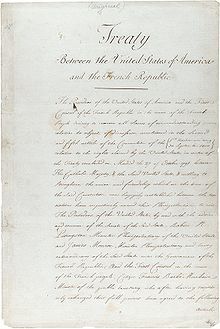This is your morning Open Thread. Pour your favorite beverage and review the past and comment on the future.
Find the past “On This Day in History” here.
December 24 is the 358th day of the year (359th in leap years) in the Gregorian calendar. There are seven days remaining until the end of the year. This day is commonly known as Christmas Eve.
On this day in 1955, NORAD begins tracking Santa in what will become an annual Christmas Eve tradition.
According to NORAD’s official web page on the NORAD Tracks Santa program, the service began on December 24, 1955. A Sears department store placed an advertisement in a Colorado Springs newspaper. The advertisement told children that they could telephone Santa Claus and included a number for them to call. However, the telephone number printed was incorrect and calls instead came through to Colorado Spring’s Continental Air Defense Command (CONAD) Center. Colonel Shoup, who was on duty that night, told his staff to give all children that called in a “current location” for Santa Claus. A tradition began which continued when the North American Aerospace Defense Command (NORAD) replaced CONAD in 1958.
On Christmas Eve, the NORAD Tracks Santa website videos page is generally updated each hour, when it is midnight in a different time zone. The “Santa Cam” videos show CGI images of Santa Claus flying over famous landmarks. Each video is accompanied by a voice-over, typically done by NORAD personnel, giving a few facts about the city or country depicted. Celebrity voice-overs have also been used over the years. For the London “Santa Cam” video, English television personality and celebrity Jonathan Ross did the voice-over for 2005 to 2007 and the former Beatles drummer Ringo Starr narrated the same video in 2003 and 2004. In 2002, Aaron Carter provided the voice-over for three videos.The locations and landmarks depicted in some of the “Santa Cam” videos have changed over the years. In 2009, twenty-nine “Santa Cam” videos were posted on the website. In previous years, twenty-four to twenty-six videos had been posted.
NORAD relies on volunteers to make the program possible. Many volunteers are employees at Cheyenne Mountain and Peterson Air Force Base. Each volunteer handles about forty telephone calls per hour, and the team typically handles more than 12,000 e-mails and more than 70,000 telephone calls from more than two hundred countries and territories. Most of these contacts happen during the twenty-five hours from 2 a.m. on December 24 until 3 a.m. MST on December 25.Google Analytics has been in use since December 2007 to analyze traffic at the NORAD Tracks Santa website. As a result of this analysis information, the program can project and scale volunteer staffing, telephone equipment, and computer equipment needs for Christmas Eve.By December 25, 2009, the NORAD Tracks Santa program had 27,440 twitter followers and the Facebook page had more than 410,700 fans.




 In April 1803, the United States purchased from France the 828,000 square miles that had formerly been French Louisiana. The area was divided into two territories: the northern half was Louisiana Territory, the largely unsettled (though home to many Indians) frontier section that was later explored by Lewis and Clark; and the southern Orleans Territory, which was populated by Europeans.
In April 1803, the United States purchased from France the 828,000 square miles that had formerly been French Louisiana. The area was divided into two territories: the northern half was Louisiana Territory, the largely unsettled (though home to many Indians) frontier section that was later explored by Lewis and Clark; and the southern Orleans Territory, which was populated by Europeans.
 When these phrases appeared in the pages of the Pennsylvania Journal for the first time, General George Washington’s troops were encamped at McKonkey’s Ferry on the Delaware River opposite Trenton, New Jersey. In August, they had suffered humiliating defeats and lost New York City to British troops. Between September and December, 11,000 American volunteers gave up the fight and returned to their families. General Washington could foresee the destiny of a rebellion without an army if the rest of his men returned home when their service contracts expired on December 31. He knew that without an upswing in morale and a significant victory, the American Revolution would come to a swift and humiliating end.
When these phrases appeared in the pages of the Pennsylvania Journal for the first time, General George Washington’s troops were encamped at McKonkey’s Ferry on the Delaware River opposite Trenton, New Jersey. In August, they had suffered humiliating defeats and lost New York City to British troops. Between September and December, 11,000 American volunteers gave up the fight and returned to their families. General Washington could foresee the destiny of a rebellion without an army if the rest of his men returned home when their service contracts expired on December 31. He knew that without an upswing in morale and a significant victory, the American Revolution would come to a swift and humiliating end. On this day in 1918, the House of Representatives passed the
On this day in 1918, the House of Representatives passed the
Recent Comments